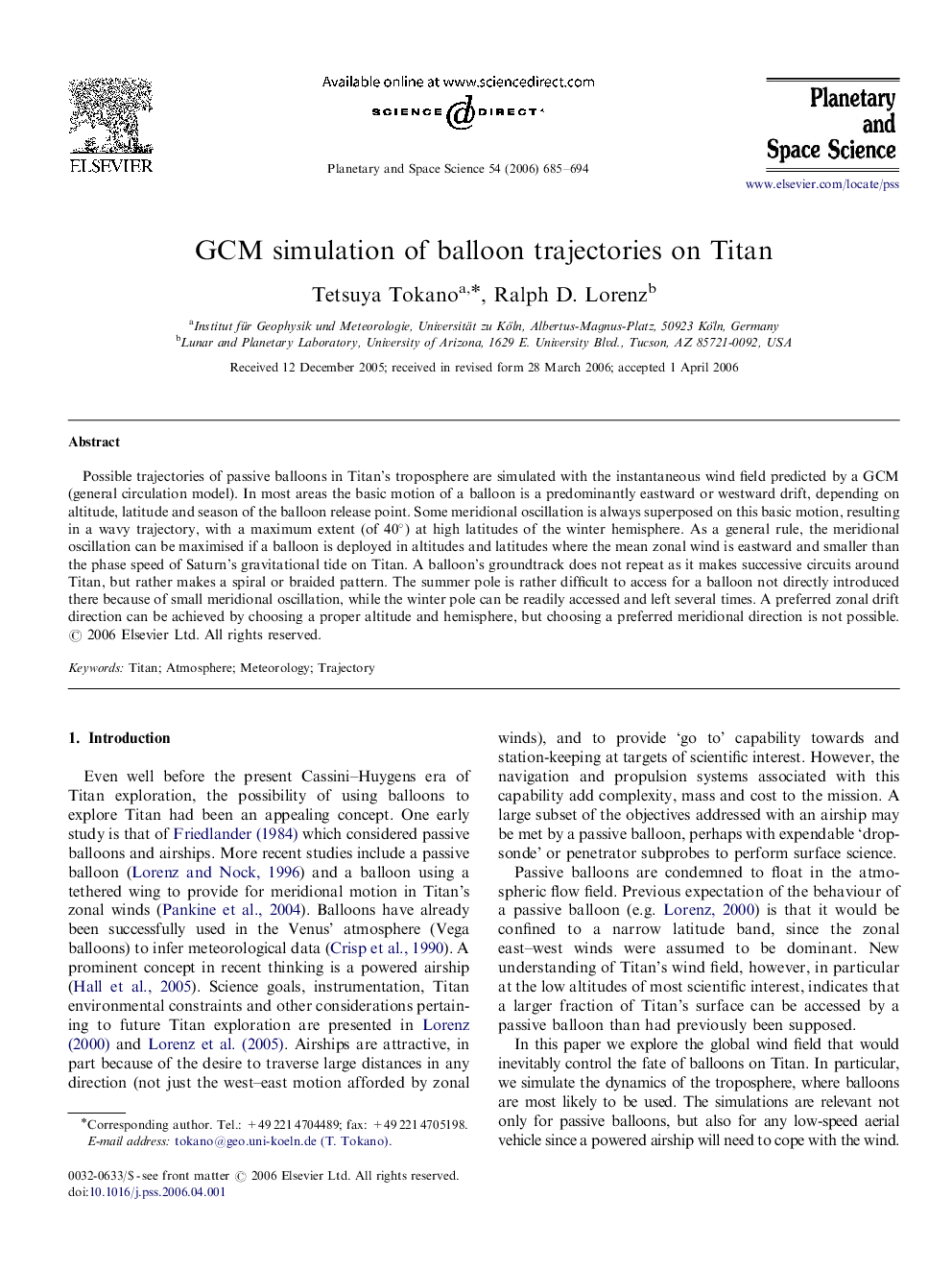| Article ID | Journal | Published Year | Pages | File Type |
|---|---|---|---|---|
| 1782837 | Planetary and Space Science | 2006 | 10 Pages |
Abstract
Possible trajectories of passive balloons in Titan's troposphere are simulated with the instantaneous wind field predicted by a GCM (general circulation model). In most areas the basic motion of a balloon is a predominantly eastward or westward drift, depending on altitude, latitude and season of the balloon release point. Some meridional oscillation is always superposed on this basic motion, resulting in a wavy trajectory, with a maximum extent (of 40â) at high latitudes of the winter hemisphere. As a general rule, the meridional oscillation can be maximised if a balloon is deployed in altitudes and latitudes where the mean zonal wind is eastward and smaller than the phase speed of Saturn's gravitational tide on Titan. A balloon's groundtrack does not repeat as it makes successive circuits around Titan, but rather makes a spiral or braided pattern. The summer pole is rather difficult to access for a balloon not directly introduced there because of small meridional oscillation, while the winter pole can be readily accessed and left several times. A preferred zonal drift direction can be achieved by choosing a proper altitude and hemisphere, but choosing a preferred meridional direction is not possible.
Keywords
Related Topics
Physical Sciences and Engineering
Earth and Planetary Sciences
Geophysics
Authors
Tetsuya Tokano, Ralph D. Lorenz,
